
Ceremonial ship launching involves the performance of ceremonies associated with the process of transferring a vessel to the water. It is a nautical tradition in many cultures, dating back thousands of years, to accompany the physical process with ceremonies which have been observed as public celebration and a solemn blessing, usually but not always, in association with the launch itself.

A marina is a dock or basin with moorings and supplies for yachts and small boats. A marina differs from a port in that a marina does not handle large passenger ships or cargo from freighters.

A dry dock is a narrow basin or vessel that can be flooded to allow a load to be floated in, then drained to allow that load to come to rest on a dry platform. Dry docks are used for the construction, maintenance, and repair of ships, boats, and other watercraft.

A dock is the area of water between or next to one or a group of human-made structures that are involved in the handling of boats or ships or such structures themselves. The exact meaning varies among different variants of the English language.
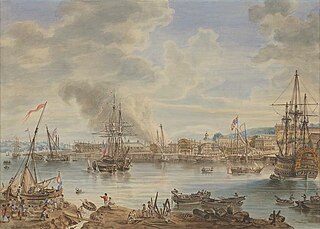
Chatham Dockyard was a Royal Navy Dockyard located on the River Medway in Kent. Established in Chatham in the mid-16th century, the dockyard subsequently expanded into neighbouring Gillingham.

SS Nomadic is a former tender of the White Star Line, launched on 25 April 1911 in Belfast now on display in Belfast's Titanic Quarter. She was built to transfer passengers and mail to and from RMS Olympic and RMS Titanic. She is the only surviving vessel designed by Thomas Andrews who also designed those two ocean liners, and the only White Star Line vessel in existence today.
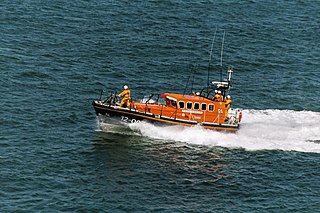
Mersey-class lifeboats are all-weather lifeboats operated by the Royal National Lifeboat Institution (RNLI) from stations around the coasts of Great Britain and Ireland. They are capable of operating at up to 17 knots (31 km/h) and can be launched from a carriage.

The Shannon-class lifeboat is the latest class of lifeboat currently being deployed to the RNLI fleet to serve the shores of the British Isles. The Shannon class is due to replace the Mersey class carriage-launched lifeboat, the remaining Tyne-class lifeboats, and to also replace the Trent-class lifeboats in due course.

A shiplift is a modern alternative for a slipway, a floating dry dock or a graving dry dock. A shiplift is used to dry dock and launch ships. It consists of a structural platform that is lifted and lowered exactly vertically, synchronously by a number of hoists. First, the platform is lowered underwater, then the ship is floated above the support, and finally the platform with support and ship is lifted and the ship is brought to the level of the quay.

Mutiny on the Bunny is a 1950 Warner Bros. Looney Tunes cartoon directed by Friz Freleng. The short was released on February 11, 1950, and stars Bugs Bunny and Yosemite Sam.

A ship cradle is a rig designed to hold a ship or boat upright on dry land to allow the vessel to be built or repaired. The vessel is held in place in the cradle by wooden chocks, cables, sand bags or restraining fixtures on the cradle. Ship cradles are made of timber or steel and are usually built adjacent the seashore, lake or river side or on the floor of a dry dock.
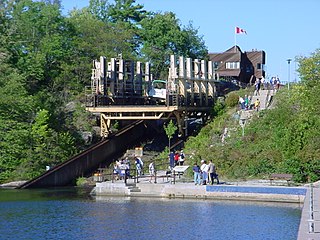
The patent slip or marine railway is an inclined plane extending from shoreline into water, featuring a "cradle" onto which a ship is first floated, and a mechanism to haul the ship, attached to the cradle, out of the water onto a slip. The marine railway was invented by a Scot, Thomas Morton, in the early 19th century, as a cheaper alternative to dry docks for marine vessel repairs, in particular below waterline. Larger modern marine railways can handle vessels of thousands of tons.
Float-out is the process in shipbuilding that follows the keel laying and precedes the fitting-out process. It is analogous to launching a ship, a specific process that has largely been discontinued in modern shipbuilding. Both floating-out and launching are the times when the ship leaves dry land and becomes waterborne for the first time, and often take place during ceremonies celebrating and commemorating that event.

The Underfall Yard is a historic boatyard on Spike Island serving Bristol Harbour in England.

RNLB Lester is the ALB lifeboat stationed at Cromer in the English county of Norfolk. Cromer is the first lifeboat station on the east of England coast to receive the latest Tamar-class all-weather lifeboat. The lifeboat became officially operational at 3:55 pm on 6 January 2008. The lifeboat was officially christened Lester on Monday 8 September by the Duke of Kent. The lifeboats name Lester has been created by using parts of the surnames of Derek Clifton Lethern and William Foster, both of whom have been long-term supporters and members of the RNLI. Mr Lethern left £1.23m to the RNLI when he died in 1992 and asked for a new lifeboat to be bought in memory of him and his friend Mr Foster.

The Oakley-class lifeboat refers to two types of self-righting lifeboat operated by the Royal National Lifeboat Institution (RNLI) around the coast of the United Kingdom and Ireland between 1958 and 1993. The 37-foot (11.3 m) Oakley was designed for carriage launching, while the larger 48-foot-6-inch (14.8 m) version was designed for slipway launching or to lie afloat. During their service they saved a combined total of 1,456 lives in 3,734 rescue launches.
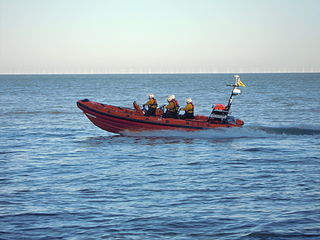
RNLB The Oddfellows (B-818) is the current rigid-inflatable inshore lifeboat on station at the English coastal town of Sheringham in the county of Norfolk in the United Kingdom.

Henry Ramey Upcher was the second private lifeboat to be stationed in the English town of Sheringham in the county of Norfolk. She was launched on 4 September 1894 and stayed on station for 41 years until she was slowly retired from duty and by 1935 had ceased rescue work completely. The lifeboat is now on permanent display in her own museum housed in her converted original boat shed.
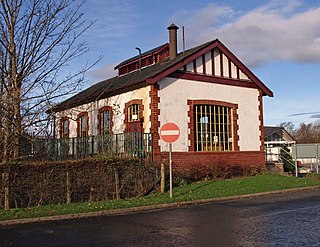
The Balloch Steam Slipway consists of a ramp, carriage and steam powered winch located on the shores of Loch Lomond by which ships or boats can be moved in and out of the loch, usually for repairs and general maintenance. It is owned and operated by the Loch Lomond Steamship Company. It is thought to be Europe's last steam operated winch and it is contained within a railway-style winch house that is category A listed.
Josefa Slipways, Inc. is a medium-category shipbuilding company based in Navotas, Philippines. It was established in 2005 to provide shipbuilding and ship repair services to shipping companies and maritime government agencies in the Philippines. The company has two slipways in Navotas for docking and launching vessels as well as another facility in Sual, Pangasinan.























